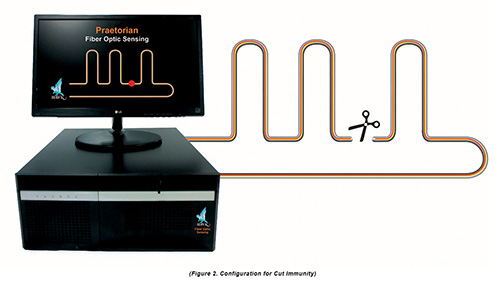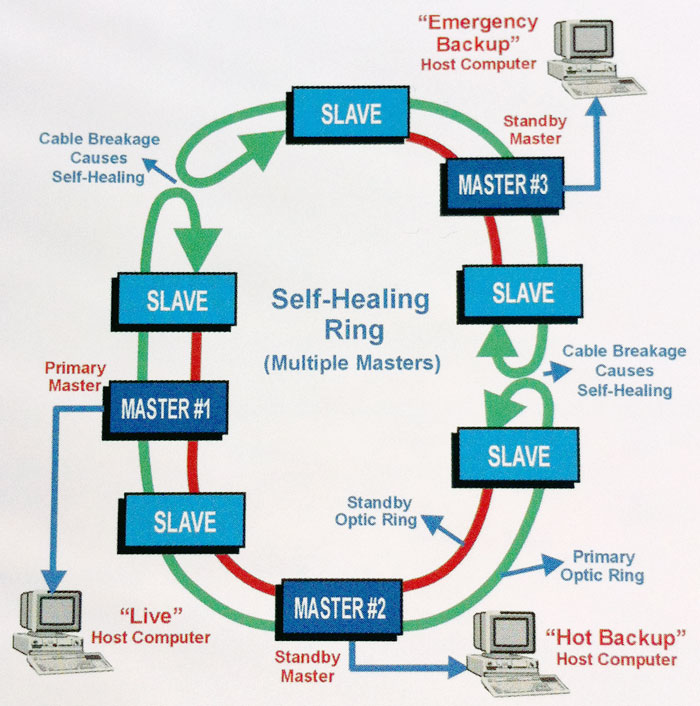Why Fiber Optic Safety Solutions Are the Future of Security
The shift to fiber optic safety systems marks a substantial development in the world of defense, driven by their remarkable data transmission abilities and durability to exterior interferences. As the landscape of safety and security advances alongside emerging innovations such as AI and IoT, the possibility for fiber optics to enhance and redefine security facilities ends up being progressively obvious.
Benefits of Fiber Optic Systems
One of the main benefits of fiber optic systems is their premium bandwidth capability, which helps with the transmission of large volumes of information over fars away without substantial loss. This characteristic is particularly beneficial for safety applications that call for the continuous surveillance and transfer of high-definition video clip feeds, sensor information, and other critical information. Optical fiber can fit the growing needs of modern-day safety and security systems, making sure that information remains undamaged and reliable.
Furthermore, fiber optic wires are less prone to electro-magnetic disturbance, which can be a considerable concern in environments with numerous electronic devices. This resistance improves the honesty of the information being sent, therefore decreasing the risk of data violations or system failings. Fiber optic systems are inherently extra safe than traditional copper cables, as touching right into a fiber optic line without detection is exceptionally hard.
The sturdiness of fiber optic cords also adds to their appeal. They are immune to ecological aspects such as wetness and temperature changes, reducing maintenance expenses and increasing system longevity. Generally, these advantages placement fiber optic systems as a durable and effective choice for contemporary safety infrastructures, making sure dependable and protected information transmission.
Boosted Information Transmission Rate

The ability to send vast amounts of data rapidly helps with the seamless combination of high-definition video clip feeds and advanced analytics. Safety systems can currently refine and evaluate details in real-time, boosting action times and situational recognition. Additionally, fiber optic links sustain longer transmission ranges without degradation of signal quality, making them suitable for extensive safety and security networks.
The raised rate of fiber optic systems not only boosts the efficiency of security procedures yet likewise lowers latency. This is specifically vital in essential scenarios where prompt decision-making can prevent security violations or reduce prospective dangers. As organizations remain to focus on safety and security and effectiveness, the need for rapid and trustworthy data transmission will undoubtedly strengthen fiber optic systems as a keystone of modern safety and security facilities.
Resistance to Disturbance
Fiber optic safety and security systems regularly show remarkable resistance to electro-magnetic disturbance, a vital benefit in environments prone to electronic noise. Unlike conventional copper cables, which can be negatively influenced by electro-magnetic fields, superhigh frequency disturbance, and various other kinds of electric disruption, fiber optic cables use light to send data. This intrinsic property makes sure that the signals remain clear and unchanged, regardless of surrounding electronic task.
Using glass or plastic fibers in fiber optic innovation develops an obstacle versus disturbance, permitting trusted data transmission even in difficult situations such as commercial centers, metropolitan areas with high electronic web traffic, or places near radio towers. This characteristic significantly minimizes the likelihood of signal destruction or loss, making fiber optic systems particularly suitable for safety and security applications where integrity and precision of data are extremely important.
Additionally, this resistance to interference boosts the total efficiency and reliability of safety and security systems, ensuring that monitoring and alert systems operate perfectly. In a globe where security is increasingly threatened by sophisticated technologies, the strength of fiber optic systems sticks out as a crucial function, strengthening their status as a vital part of modern security infrastructure.
Cost-Effectiveness Over Time
Substantial cost savings can be achieved with time with the execution of fiber optic protection systems. While the preliminary financial investment may seem greater contrasted to typical copper-based systems, the more helpful hints long-term economic advantages emerge through lowered operational and maintenance expenses (fiber security). Fiber optic cords are inherently much more durable and less at risk to environmental aspects, which equates to reduce substitute and fixing expenses over their lifespan
Furthermore, fiber optic systems call for less power to run, which better decreases power expenses. Boosted information transmission capabilities permit less repeaters and amplifiers, reducing tools investment and simplifying installment procedures. The scalability of these systems also contributes to cost-effectiveness, as organizations can increase their security infrastructure without incurring considerable additional expenditures.
One more element to think about is the boosted efficiency in tracking and this content reaction capabilities that optical fiber give. Enhanced real-time data transmission can result in quicker case feedback times, potentially mitigating losses and obligations connected with protection violations. In amount, the lasting benefits of fiber optic protection systems not only validate the first expenditure yet also position them as a financially sensible selection for companies looking for robust defense solutions.

Future Developments in Security
Advancing innovations are established to transform security systems, integrating synthetic knowledge (AI) and maker knowing to enhance hazard detection and action abilities. These technologies will certainly permit safety and security systems to evaluate substantial quantities of data in real-time, recognizing patterns and anomalies that indicate potential risks. This proactive approach will certainly make it possible for quicker decision-making and extra effective case feedbacks.
Additionally, the incorporation of the Net of Points (IoT) is leading the way for interconnected safety and security gadgets, providing comprehensive surveillance and surveillance. Smart sensors can pass on details about ecological changes, while automated signals can inform security employees promptly of dubious tasks.
In addition, the development of biometric innovations will better boost safety systems. Face acknowledgment, finger print scanning, and retina identification are ending up being much more innovative, offering layers of authentication that are hard to bypass.
Conclusion
In over here final thought, fiber optic safety systems stand for a substantial innovation in defense technology, offering unparalleled information transmission rate, resistance to electromagnetic interference, and lasting cost-effectiveness. As the demand for sophisticated safety and security options proceeds to grow, the combination of fiber optics with arising technologies such as AI, IoT, and biometrics will even more boost protection frameworks (fiber security). The combination of these innovations will certainly guarantee a much more protected and responsive environment, solidifying fiber optics as a cornerstone of future security systems